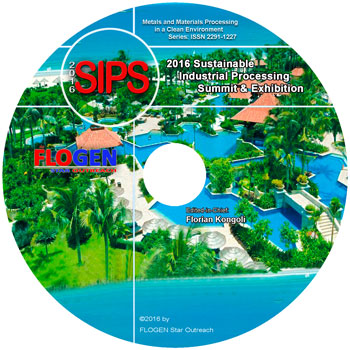2016-Sustainable Industrial Processing Summit
SIPS 2016 Volume 4: Santilli Intl. Symp. / Mathematics Applications
| Editors: | Kongoli F, Gaines G, Georgiev S, Bhalekar A |
| Publisher: | Flogen Star OUTREACH |
| Publication date: | 21 December 2016 |
| Pages: | 320 pages |
| ISBN: | 978-1-987820-42-3 |
| ISSN: | 2291-1227 (Metals and Materials Processing in a Clean Environment Series) |

CD shopping page
Nuclear Configuration of Stable Nuclides In Terms Of Isonucleons and Their Nuclear Spins
Anil Bhalekar1; Prof. Ruggero Santilli2;1R. T. M. NAGPUR UNIVERSITY,, Nagpur, India; 2THUNDER ENERGIES CORPORATION, Tarpon Springs, United States;
Type of Paper: Regular
Id Paper: 251
Topic: 38
Abstract:
R. M. Santilli has developed a covering isomathematics and related isomechanics. Amongst its various applications he has also laid down the foundations of the time invariant representation of nucleons as extended, non-spherical and deformable particles, and indicated the fundamental relevance of the Lie-Santilli isotheory for the nuclear structure in terms of isonucleons (isoelectrons, isoprotons and isoneutrons) and based on it he has described the nuclear magnetic moments of all stable nuclides starting from deuteron as isodeuteron. In that a neutron and a deuteron, are shown as constituted of isoprotons and isoneutrons that are the mutual penetrated states of the wavepackets of protons and electrons. We have extended this description to higher atomic number stable nuclides (up to Z= 82). The approach adopted has been to develop nuclear configurations which are commensurate with the observed nuclear spins. Since in our proposal we use only the isoelectrons, isoneutrons and isoprotons as the basic constituents we are indeed incorporating isomathematics and isomechanics. However, the details of the quantitative hadronic mechanics of each isonuclides have not been completely investigated so far. But these nuclear configurations we believe would substantially assist in our future attempts. We have developed two approaches. The first one builds nuclear configurations taking isodeuterons, isoneutrons and isoprotons as basic constituents whereas the second one uses only the isoprotons and isoelectrons as basic nuclear constituents. Notice that when we use isodeuterons as basic nuclear constituents there is no room to speak of isoelectrons separately because each isodeuteron consists of two isoprotons and one isoelectron. It turns out that isoelectrons, indeed, serve as effective nuclear glue. Some preliminary generalizations of both the models would be discussed.